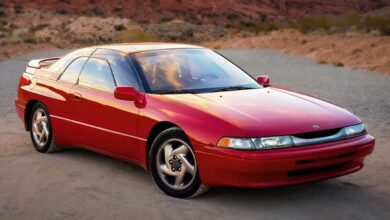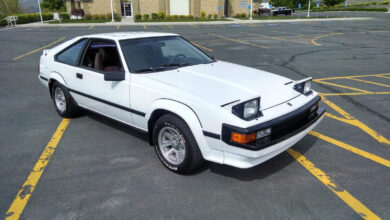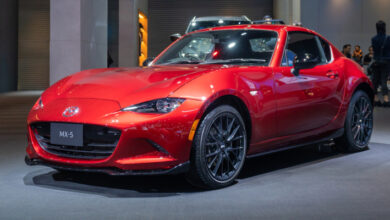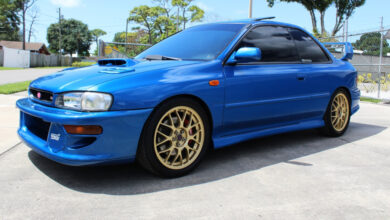Beginning a Legacy with the 1978 Toyota Celica Supra
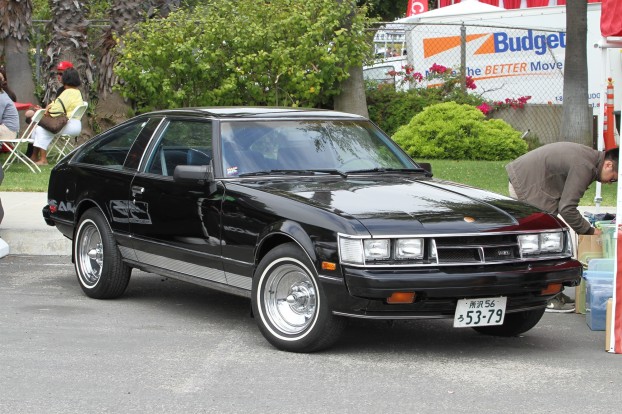
With the primary goal of competing with the Datsun Z, Toyota was probably not even thinking about long-term success at the time. Even though the battles had already begun, the war between Nissan and Toyota was just heating up. Yet, in the peace of April in 1978, production of the all-new Supra officially began.
As the first generation of its kind, the 1978 Toyota Celica Supra was only available in Japan upon its release. Toyota did not begin exporting the Supra until January of 1979. Eventually, they marketed the name Celica Supra worldwide, but it was the Toyota Celica XX in Japan.
First-generation Supra production spanned from 1978 to 1981 out of the Tahara plant in Japan. Obviously, the original Supra shares a lot with the Celica, including the name for the first two generations. However, there are some differences between the first Supra and the Celica of the same era.
For starters, the Supra is a little over 5 inches longer than the Celica. Both cars share the same doors and a similar rear, but the Supra has longer front panels. The elongated panels make room for the inline 6-cylinder engine of the Supra compared to the 4-cylinder of the Celica.
Speaking of engines, there were two engine options for the 1978 Toyota Celica Supra. Both engines are inline 6-cylinder engines, but Japanese models have a smaller displacement to save on Japan’s road taxes.
Federalized models or Supras earmarked for export, featured the larger 2.6L SOHC 12-valve inline 6-cylinder engine. It is the 4M-E inline-6 from Toyota.
Japanese Supras have the 2.0L SOHC 12-valve inline 6-cylinder engine under the hood. This is the EM-U inline-6 engine from Toyota. It produces 110 horsepower at 5,600 rpm.
There are some discrepancies surrounding the power ratings of these two engines. Some sources claim the factory setup restricts the horsepower of the larger 4M-E engine. The 2.6L 4M-E engine produces 110 hp at 4,800 rpm with the stock setup.
Tuning or hot-rodding cars to squeeze more potential out of them is nothing new. In the case of the 4M-E, legend has it, more power is possible in the right hands.
Both engines feature electronic fuel injection, which was fairly uncommon in 1978. Even though this initially reduced horsepower, it improved fuel efficiency considerably over Toyota’s previous carbureted engines. Obviously, modern EFI technology is incredible compared to the 70s, but this was a major step forward.
Shifting gears in the first Celica Supra depends on your preference. You can choose from a 5-speed manual transmission or a 4-speed automatic. Both transmissions feature overdrive for comfortable highway driving with the 5th gear being OD for the manual.
This is a Toyota, Lexus Did Not Exist Yet
Toyota built this Celica Supra on the A40/A50 platform. The chassis codes are MA45 for the 2.0L version and MA46 or MA47 for 2.6L configurations. They all feature a front-engine, rear-wheel drive layout for a familiar driving experience.
Plenty of optional features or equipment were available with the first Supra. For example, a limited-slip differential was available with the MA46 or MA47 chassis configurations.
There are a lot of things to love about the 1978 Toyota Celica XX/Supra. It is ahead of its time by offering disc brakes as standard equipment on all four wheels. The suspension engineering and components are equally impressive for the era.
Standard equipment includes a four-link rear suspension with coil springs. There is also a lateral track bar and a stabilizer bar, it even has MacPherson struts in the front. With handling ability like this, it is easy to see how the Supra captured the attention of drivers worldwide.
Hop inside the 1978 Toyota Supra to experience comfort and convenience. Enjoy the optional power windows and power locks, just try not to lock your keys in the car. Remember those days?
Of course, if you have the optional sunroof open, you could attempt to climb back in. Try not to damage the paint, people are going to want this car in about 40 years or so.
On a beautiful day, there is no reason not to go for a drive with the sunroof open. Simply set the optional cruise control on your favorite highway and enjoy some tunes. After all, you do have a cutting-edge AM/FM 4-speaker stereo system.
Many sports cars of the era did not offer as many amenities as the first Supra. It has a tilt steering wheel and an extendable map light because nobody has a clue what GPS is yet. All in all, not bad for 1978.
Pronounced Double X
If you want to find a 1978 Toyota Celica Supra for sale, you will need to be patient. When looking for one, remember to call it the Toyota Celica double X whenever saying it. You should still write or type it out as the Toyota Celica XX.
Finding a ‘78 is difficult, you will have more luck browsing the Japanese market. Keep in mind, the Supra did not appear on North American shores until 1979. You will have some luck looking for other years of the first-generation Toyota Celica Supra.
Expect to see prices around $10,000 for a drivable example of a 1979 or 1980 Supra. You might be able to find project examples for under $7,000, depending on how much TLC it needs. Pristine examples will fetch close to $20,000 or possibly more.
The first-generation Toyota Celica Supra offers nostalgic driving in an affordable package. Toyota still offers exceptional parts support on many of their classic models. On top of that, many of their cars prove to be reliable and durable over the years.
Perhaps you appreciate the lineage of the Supra and want to preserve a piece of it for yourself. Or, perhaps you are just looking to dip your toe into the classic car market. It is tough to overlook a reasonably priced vintage car if you want something you can drive without guilt.
As an indirect descendent of the legendary Toyota 2000GT, the Supra continues its inline 6-cylinder heritage. Although this may not be the most desirable Supra generation, the Celica XX lit a torch Toyota still carries to this day. That alone makes this car worthy of the history books.
